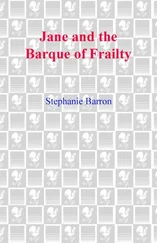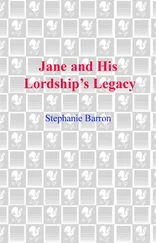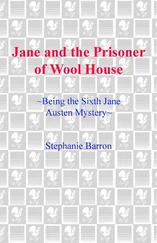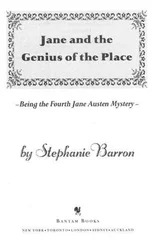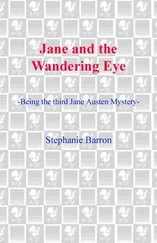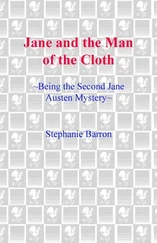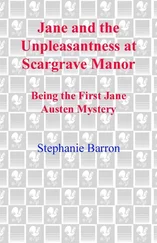Stephanie Barron - Jane and the Stillroom Maid
Здесь есть возможность читать онлайн «Stephanie Barron - Jane and the Stillroom Maid» весь текст электронной книги совершенно бесплатно (целиком полную версию без сокращений). В некоторых случаях можно слушать аудио, скачать через торрент в формате fb2 и присутствует краткое содержание. Жанр: Исторический детектив, Иронический детектив, на английском языке. Описание произведения, (предисловие) а так же отзывы посетителей доступны на портале библиотеки ЛибКат.
- Название:Jane and the Stillroom Maid
- Автор:
- Жанр:
- Год:неизвестен
- ISBN:нет данных
- Рейтинг книги:5 / 5. Голосов: 1
-
Избранное:Добавить в избранное
- Отзывы:
-
Ваша оценка:
- 100
- 1
- 2
- 3
- 4
- 5
Jane and the Stillroom Maid: краткое содержание, описание и аннотация
Предлагаем к чтению аннотацию, описание, краткое содержание или предисловие (зависит от того, что написал сам автор книги «Jane and the Stillroom Maid»). Если вы не нашли необходимую информацию о книге — напишите в комментариях, мы постараемся отыскать её.
Jane and the Stillroom Maid — читать онлайн бесплатно полную книгу (весь текст) целиком
Ниже представлен текст книги, разбитый по страницам. Система сохранения места последней прочитанной страницы, позволяет с удобством читать онлайн бесплатно книгу «Jane and the Stillroom Maid», без необходимости каждый раз заново искать на чём Вы остановились. Поставьте закладку, и сможете в любой момент перейти на страницу, на которой закончили чтение.
Интервал:
Закладка:
“To the murder of his wife, perhaps, against the vastness of her fortune?”
“I have you to thank for Hary-O’s present safety. I shall always think of you with gratitude and fondness, Jane — for this, as for so many past examples of your goodness.”
“As I shall think of you,” I managed. And stifled all other words that might have come. I reached for a small packet that yet stood upon the parlour table, and presented it to him. “Pray extend my thanks to the Countess for the use of her combs.”
“I believe she intended to make a present of them to you.”
“Lady Swithin is very good — but I could never accept anything so fine.”
He gave me a long look, then slipped the jeweller’s box into his coat. “Shall I escort you below? The dissipation of a giddy watering-place, and a thousand gallant sailors, await you in Southampton.”
He offered his arm; I tucked my hand between the folds of sleeve and coat; and so was carried off quite handsomely to the waiting chaise. He handed me in, and lifted his hat; and as the carriage creaked to life, I summoned resources enough to wave.
But it was a considerable period before I could utter a word, or appear sensible to my mother’s cries of delight as the carriage slipped south with the autumn leaves; and of Mr. Cooper’s voice lifted fulsomely in hymns of praise, I heard not a syllable. The image of a silver head and a whipcord form — of one last, serious parting look — were all that filled my sight. I suppose more than one young woman has been sustained a twelvemonth on so little.
Editor’s Afterword
REMEDIES SIMILAR TO THOSE FOUND IN TESS ARNOLD’S stillroom book appear in a variety of facsimile publications of old cooking guides. Those chiefly useful for this editor’s purposes were: The British Housewife, or, the Cook, Housekeeper’s and Gardiner’s Companion, by Mrs. Martha Bradley, late of Bath (1756); Volumes I, II, and III (Prospect Books, 1997). Also consulted was Healthy Living, 1850–1870 , compiled by Katie F. Hamilton from A. E. Youman’s Dictionary of Every-Day Wants , first published in New York in 1878, and now available from Metheglin Press, Phoenix, AZ. Although the remedies offered in Thomas Dawson’s The Good Huswifes Jewell of 1596 (Maggie Black, editor, Southover Press, 1997) might be thought dated by Austen’s period, the stillroom tradition evident in the volume finds it heirs in women like Tess Arnold.
DURING HER JOURNEY DOWN FROM THE MIDLANDS in September 1806, Jane Austen succumbed to whooping cough. The illness lingered through the fall as she attempted to set up house in Southampton, in company with her brother Captain Francis Austen and his new bride. Though relations between the Austens and the Coopers remained cordial, there is no record of Jane ever visiting Hamstall Ridware or Derbyshire again.
The Whig party luminary Charles James Fox died suddenly at his home outside London on September 13, 1806. It was a signal blow to his lifelong friends and political colleagues, who had looked to Fox to lead the Whigs into power. Lady Elizabeth Foster was present at Fox’s death; the fifth Duke of Devonshire walked behind his coffin through Pall Mall to Westminster Abbey. The Whig strategy plotted that summer at the Chatsworth dinner table, during which Andrew Danforth was suspiciously absent, was thus never put into effect.
Readers new to the history of the Devonshire ménage during the late-eighteenth and early-nineteenth centuries may be interested to learn that Lady Elizabeth Foster became the fifth duke’s second duchess in the fall of 1809.
William, Lord Hartington, was eventually reconciled to his father’s choice of wife; but despite the family’s firm insistence that Hart was Georgiana’s son, he is rumored to have harbored doubts regarding his inheritance of the dukedom. When Canis died in 1811, Hart duly became the sixth Duke of Devonshire; but he never married, and never produced an heir, so that at Hart’s death the dukedom passed to a cousin. In this small way, legend has it, William Cavendish rectified any errors of legitimacy compounded by his extraordinary parents.
Lady Harriot Cavendish married Granville Leveson-Gower on Christmas Eve, 1809. It is possible that her father’s marriage two months previous made Hary-O’s position within the family intolerable, and that the prospect of union with a man twelve years her senior was no longer a source of alarm. The fact that her aunt, the Countess of Bessborough, had by this time borne Leveson-Gower two illegitimate children, is something she may not even have known; but certainly she learned of it later.
Leveson-Gower was created Earl Granville in 1833, so that Hary-O, like her dear friend Desdemona Trowbridge, left off being a duke’s daughter in order to become a countess. Earl Granville served as British ambassador to Paris, where we may assume Lady Granville presided over a most diplomatic household. She had been trained for such an occupation from birth.
The opinion of Lord Harold Trowbridge regarding Hary-O’s marriage is nowhere recorded. He is thought to have spent Christmas Eve, 1809, somewhere along the Iberian Peninsula on behalf of the Crown. At the time, news of his lordship had not reached the ton for nearly a year — although certainly his secret dispatches found their way into competent hands. It is best, perhaps, that Lord Harold was saved the unfortunate duty of toasting the bride and groom; but a very fine portable writing desk, of Spanish origin and craftsmanship, eventually appeared among the wedding gifts displayed at Devonshire House.
Lady Harriot was, after all, one of the greatest letter writers of her period — in print, she rivals even Jane Austen for sharpness and sagacity.
Примечания
1
Jane’s adventures while with the Reverend Thomas Leigh in Warwickshire may be found in “Jane and the Spoils of Stoneleigh,” in Malice Domestic 7, Avon Books, 1998. — Editor’s note .
2
The Cock and Pynot of Old Whittington is now the Revolution House, a museum dedicated to the conspirators of 1688, where Mr. John d’Arcy’s contribution is duly noted. — Editor’s note .
3
Much of Jane Austen’s description of her first view of Chatsworth echoes wording she would later employ to describe Elizabeth Bennet’s first glimpse of Pemberley, the Derbyshire estate of Fitzwilliam Darcy, in Pride and Prejudice. — Editor’s note .
4
Present-day visitors to Chatsworth will detect a discrepancy here between Jane’s description of its interior and grounds and the manner in which both now appear. The sixth Duke of Devonshire made extensive renovations and additions to the estate after his accession in 1811. The colonnade through which Jane passed was then enclosed, and the twin staircases replaced with a single flight and matching galleries along the east and west walls. — Editor’s note .
5
Spencer was the maiden name of Georgiana Cavendish, Duchess of Devonshire. — Editor’s note .
6
Blue John is a blue-colored fluorspar peculiar to Derbyshire. During the eighteenth and nineteenth centuries, it was often carved into vases and ornamental figures, examples of which may be seen at Chatsworth today. — Editor’s note .
7
Although the Duke of Devonshire had not yet acknowledged his paternity of Lady Elizabeth Foster’s children by 1806, he was to do so several years later. Lady Elizabeth bore the duke a daughter, named Caroline St. Jules, in 1785, and a son, named Augustus William Clifford, in 1788. The Cavendish family has always maintained, however, that William Cavendish, born 1790 and here referred to as the Marquess of Hartington, was indeed Georgiana’s son. — Editor’s note .
Читать дальшеИнтервал:
Закладка:
Похожие книги на «Jane and the Stillroom Maid»
Представляем Вашему вниманию похожие книги на «Jane and the Stillroom Maid» списком для выбора. Мы отобрали схожую по названию и смыслу литературу в надежде предоставить читателям больше вариантов отыскать новые, интересные, ещё непрочитанные произведения.
Обсуждение, отзывы о книге «Jane and the Stillroom Maid» и просто собственные мнения читателей. Оставьте ваши комментарии, напишите, что Вы думаете о произведении, его смысле или главных героях. Укажите что конкретно понравилось, а что нет, и почему Вы так считаете.



